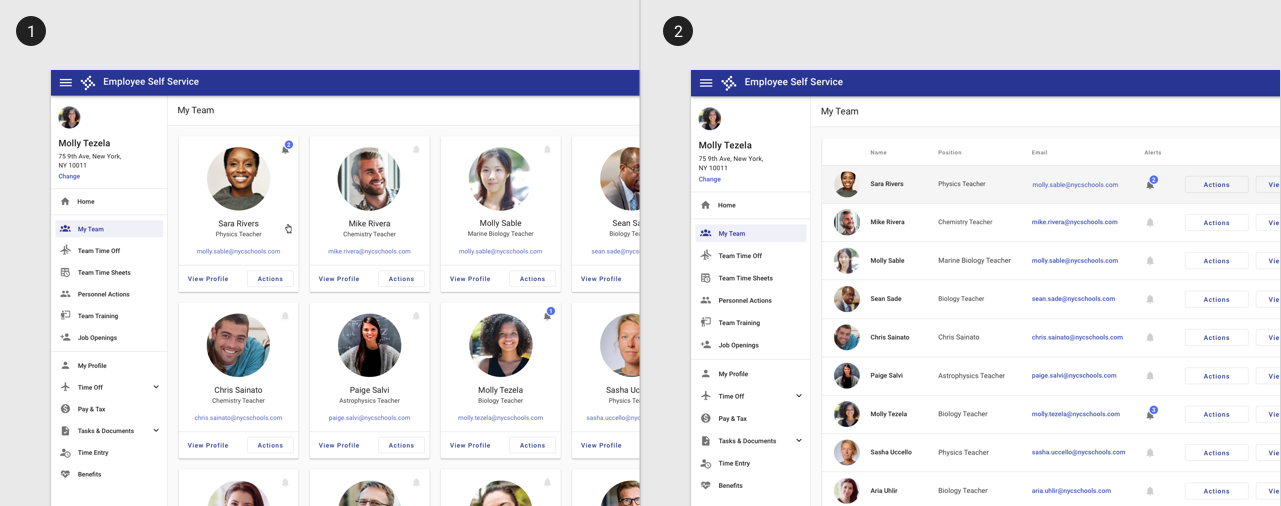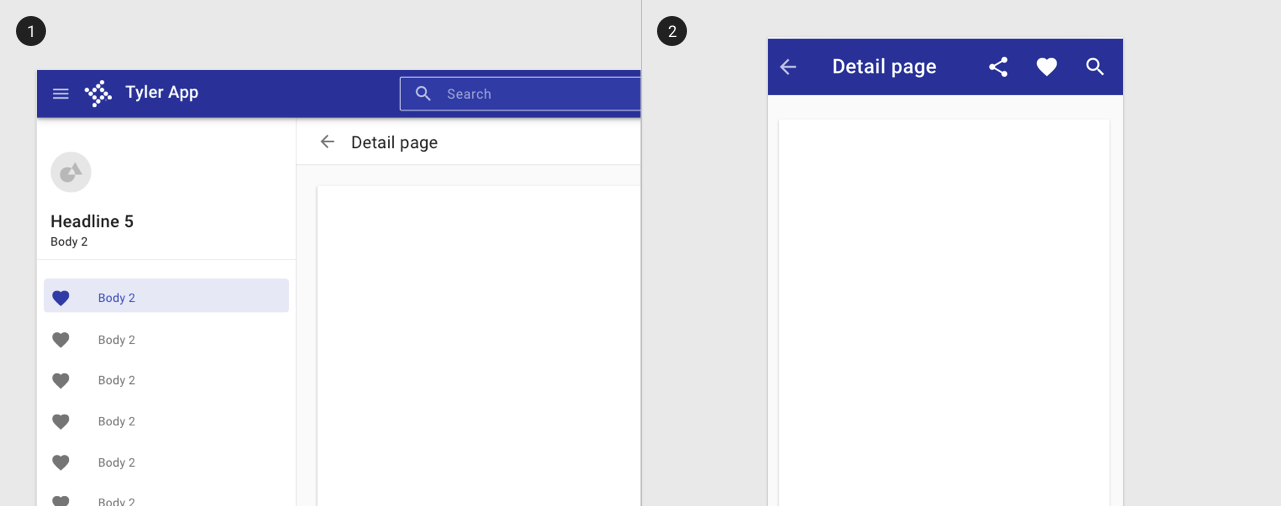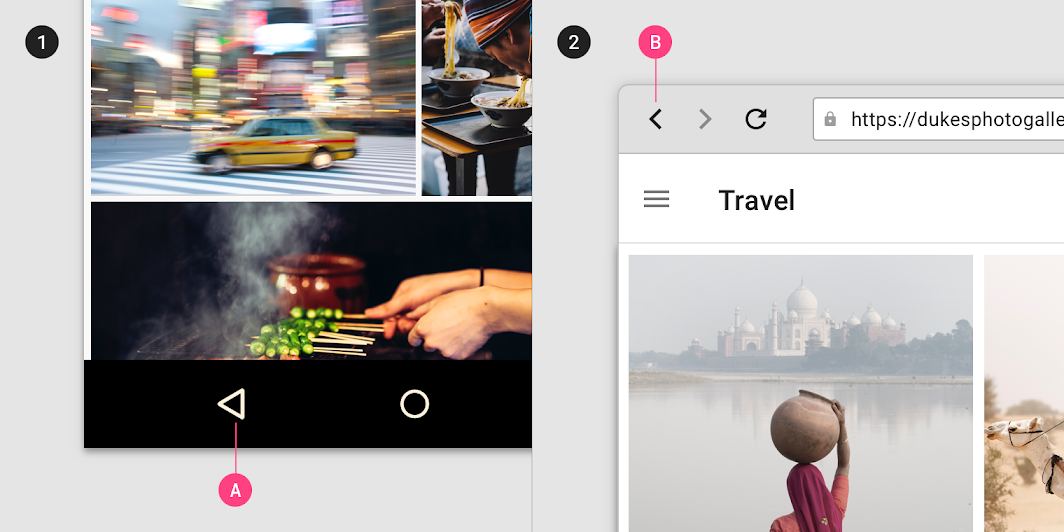Navigation: Hierarchical
Navigation enables users to move through an app.

Downward or upward movement in app’s hierarchy to access deeper content, from a parent screen (higher level of hierarchy) to a child screen (lower level) or vice versa.
Hierarchical navigation can meet the following user needs:
- Downward navigation (parent ➔ child)
- Upward navigation (child ➔ parent)
- Reverse navigation (following a user's path back through the app)
1. Downward navigation
Movement from a parent screen (higher level of hierarchy) to a child screen (lower level), such as a navigating from a list of records to a single detail screen.
Components to use
- Collections such as cards or lists.
- In-app search on one or more screens
- Links within content

Cards or lists may be used to facilitate downward navigation.
2. Upward navigation
Movement from a child screen (lower level of hierarchy) to a parent screen (higher level).
Components to use
- For detail screens, use a toolbar and back arrow to allow for upward navigation.
The back arrow pattern should only be used for upward navigation within an app. Use native browser or mobile back functionality to allow users to move chronologically through their recent screen history.

Use a back arrow to indicate upward navigation.
1. On desktop, use a toolbar and back arrow to indicate navigating up one level.
2. On native mobile apps, use a back arrow in the app bar to indicate navigating up one level.
3. Reverse navigation
Chronological movement through recent screen history, specific to a single user.
Design principles
- Return users to their prior screen position and state, such as their vertical scroll position, to speed up information recall and task resumption.
- Provide clear messaging if a screen’s prior state is no longer available, such as when information from a form has been cleared for privacy.
- Clearly indicate child screens’ relationship with screens above them in the hierarchy. For example, if a user moves directly to a child screen in your app, they should be able to identify the parent screen to which they can navigate upward.
Components to use:
- Native browser "back" functionality
- Native Android or iOS "back" functionality

The Back button allows users to navigate recently viewed screens in reverse chronological order.
1. The Back button (A) in the Android navigation bar.
2. The Back button (B) in a web browser.